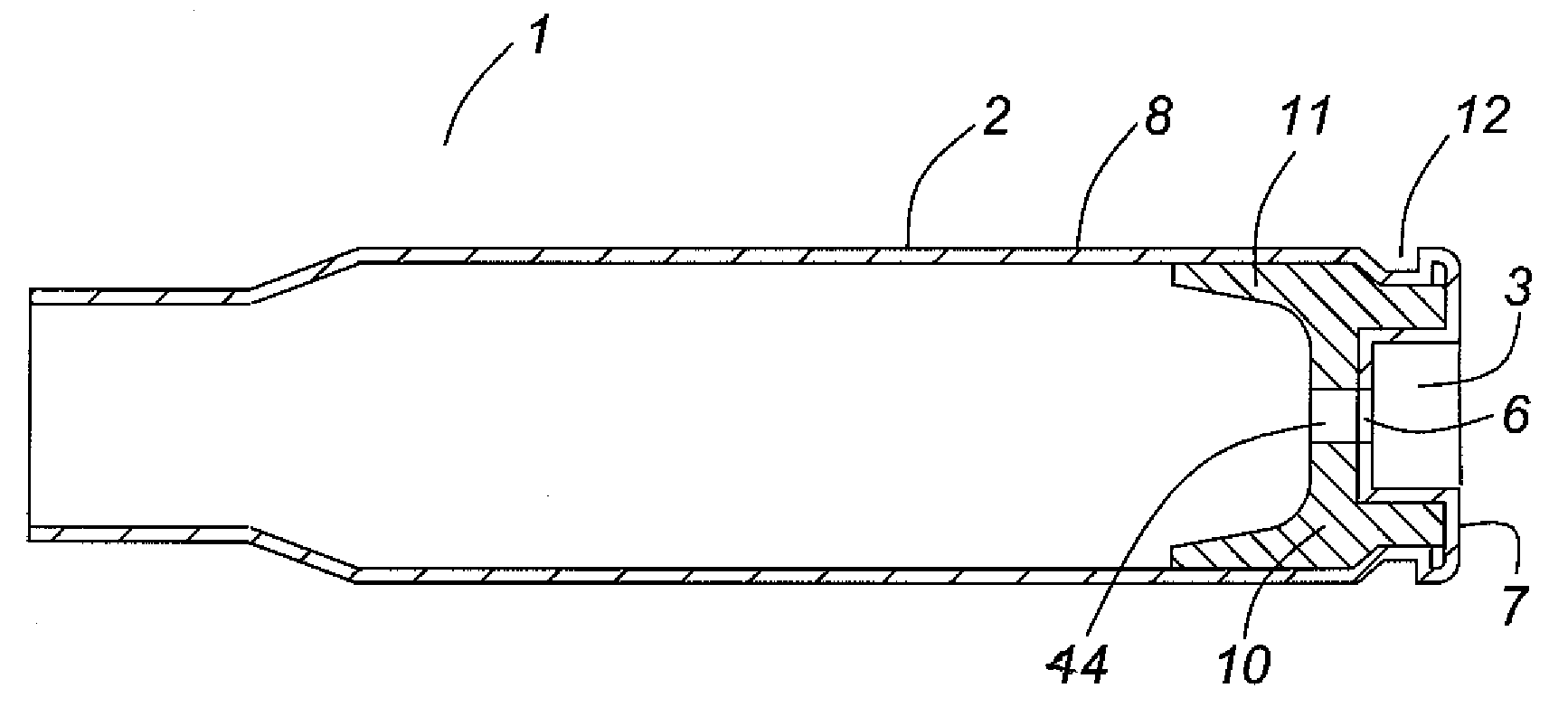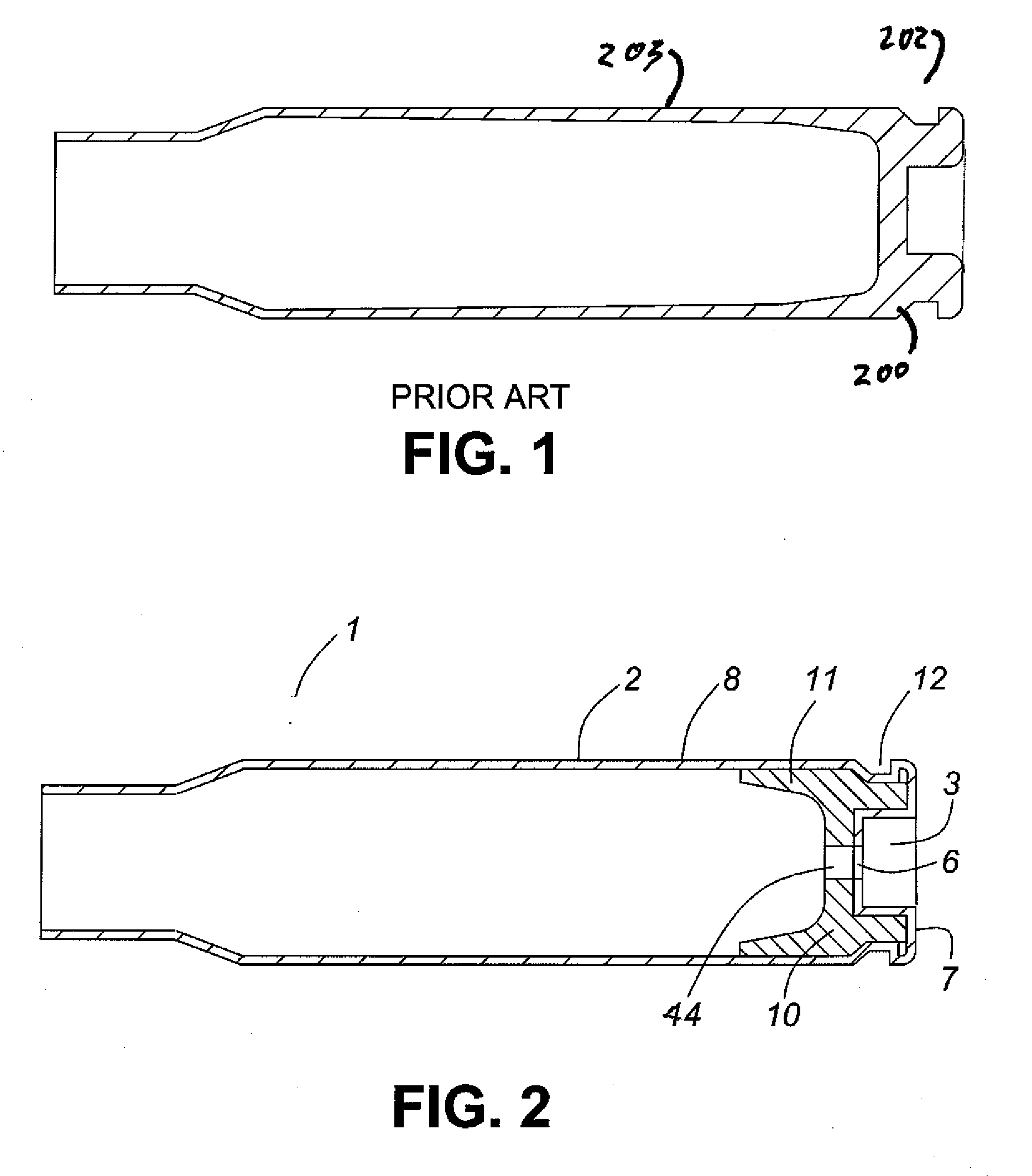Thin walled, two component cartridge casing
- Summary
- Abstract
- Description
- Claims
- Application Information
AI Technical Summary
Benefits of technology
Problems solved by technology
Method used
Image
Examples
Embodiment Construction
[0057]FIG. 1 shows a typical prior art cartridge case. A case of this type is formed by the progressive drawing of an initially thick “coin”, and as a result has a thick base member 200 at the head end 202 and a tapered cylindrical sidewall 203.
[0058]FIG. 2 depicts a first embodiment of the cartridge casing 1 of the current invention. A cartridge casing 1 is provided with an cylindrical outer case member 2 having a cylindrical sleeve portion 8 and an end member 7. A cylindrical reinforcing plug 10 is located at the head end 202 of the cartridge casing 1. The reinforcing plug 10 is arranged such that it will provide additional strength to the sleeve-like case member 8 in the base area of the cartridge casing 1 needed to withstand the higher stresses in that area of the cartridge casing 1 occurring as a result of gas expansion at the area of the cartridge casing 1 where the case 1 is not substantially supported by the barrel or bolt assembly.
[0059]In order to produce the outer case me...
PUM
 Login to View More
Login to View More Abstract
Description
Claims
Application Information
 Login to View More
Login to View More - R&D
- Intellectual Property
- Life Sciences
- Materials
- Tech Scout
- Unparalleled Data Quality
- Higher Quality Content
- 60% Fewer Hallucinations
Browse by: Latest US Patents, China's latest patents, Technical Efficacy Thesaurus, Application Domain, Technology Topic, Popular Technical Reports.
© 2025 PatSnap. All rights reserved.Legal|Privacy policy|Modern Slavery Act Transparency Statement|Sitemap|About US| Contact US: help@patsnap.com



